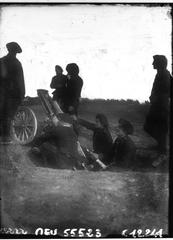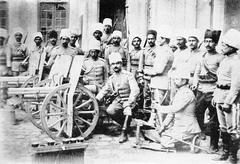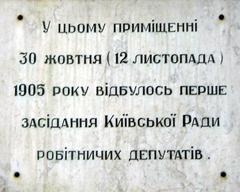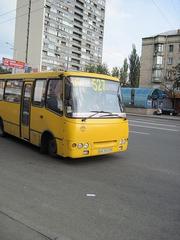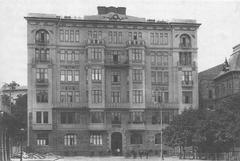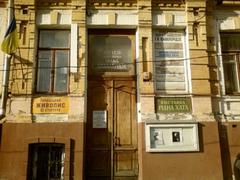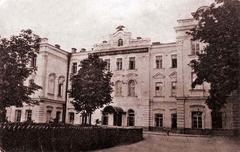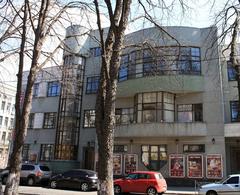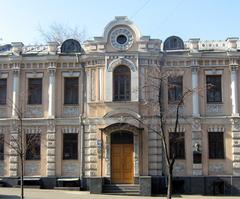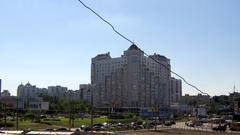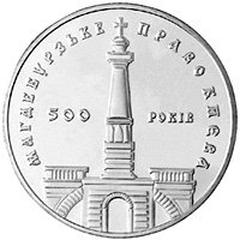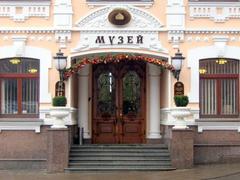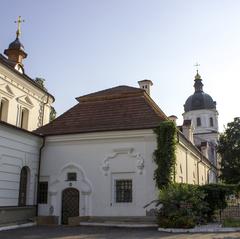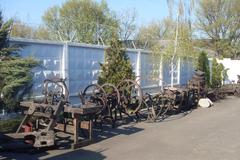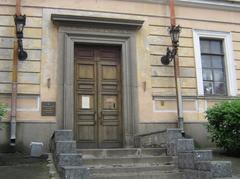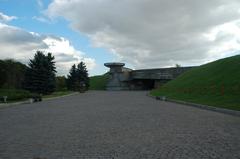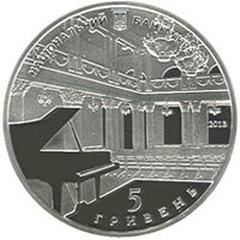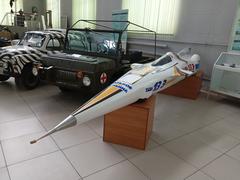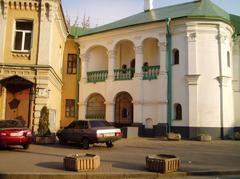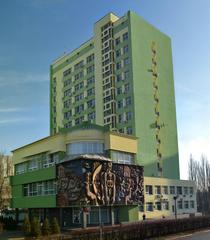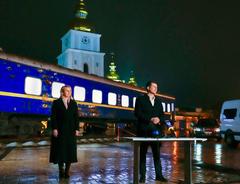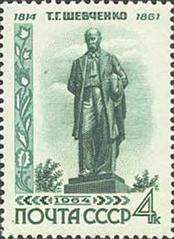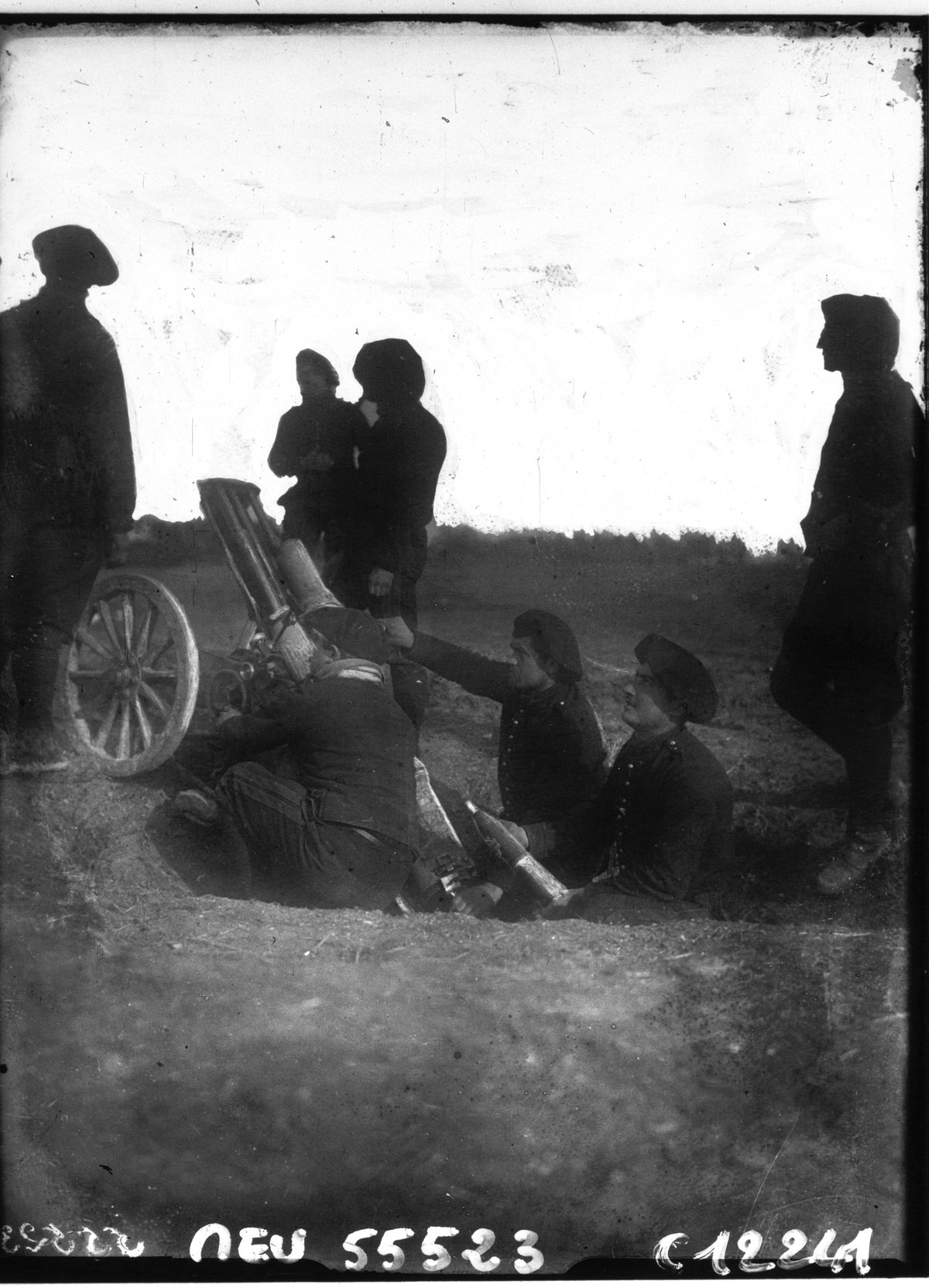
Visiting the 75 mm Schneider-Danglis 06/09 in Kyiv, Ukraine: Tickets, Hours, and Essential Tips
Date: 15/06/2025
Introduction: The 75 mm Schneider-Danglis 06/09—A Window into Military History
The 75 mm Schneider-Danglis 06/09 field gun is a testament to early 20th-century military innovation and the shifting tides of European history. Originating from a partnership between the French firm Schneider et Cie and Greek engineer Panagiotis Danglis, this artillery piece introduced vital advancements such as a hydro-pneumatic recoil system and a split trail carriage, greatly improving battlefield mobility and firing efficiency.
Initially designed to meet the demands of the Balkan Wars and World War I, the gun was widely adopted by European armies—including those of Greece, Russia, Romania, and others—and saw extensive use in some of the most significant conflicts of the era. Today, it stands as a preserved artifact at the National Museum of the History of Ukraine in the Second World War in Kyiv, offering visitors a unique opportunity to engage with both technological progress and the region’s military heritage.
This guide explores the gun’s origins, technical features, and operational history, alongside practical information for planning your visit—covering museum location, hours, ticketing, accessibility, and expert tips. Whether you’re a military history enthusiast, educator, or traveler eager to discover Kyiv’s historical sites, this article equips you with everything you need to appreciate the enduring significance of the Schneider-Danglis 06/09 (National Museum of the History of Ukraine in the Second World War, Military Factory, Landships.info).
Origins and Development: A Franco-Greek Collaboration
The Schneider-Danglis 06/09 emerged from the need for a modern, mobile artillery piece. Major Panagiotis Danglis, a Greek artillery officer, first conceptualized the design in 1893, aiming for a lightweight gun suitable for mountainous terrain. The French Schneider company manufactured the prototype between 1905 and 1906 after Danglis persuaded them to adopt his innovative vision (en.wikipedia.org, en-academic.com).
After evaluations against competing designs, notably from Germany’s Krupp, the Greek Army officially adopted the improved 06/09 version in 1909. The gun’s reputation quickly spread, leading to its adoption by several European armies and licensed production in Russia (military-history.fandom.com).
Technical Specifications and Innovations
The 75 mm Schneider-Danglis 06/09 was a technical marvel for its era, combining firepower, portability, and innovative recoil management:
- Caliber: 75 mm L/16.7
- Barrel Length: 1.25 meters
- Weight (in action): 616 kg
- Maximum Range: 5,800 meters (high-explosive), 5,000 meters (shrapnel)
- Muzzle Velocity: 350 m/s
- Elevation: +19° 8′ to -7° 4′
- Traversing Angle: 4° 30′
- Carriage: Disassembles for pack animal transport
- Recoil System: Hydro-pneumatic
- Shield Thickness: 4 mm
These features made the gun effective in mountainous and varied terrain and allowed for rapid deployment and high rates of sustained fire (bulgarianartillery.it).
Operational History: From Balkan Wars to Ukraine
Early Service
Initially fielded by the Hellenic Army in the Balkan Wars (1912–1913), the Schneider-Danglis 06/09 proved its worth in rugged conditions, supporting infantry actions and countering fortifications (Greek Military History).
World War I and Beyond
With the onset of World War I, the gun’s production expanded. Russia, Serbia, Bulgaria, and Finland all made use of the Schneider-Danglis, with Russia also manufacturing licensed versions at the Putilov Works in St. Petersburg. Its continued use through subsequent conflicts, including the Greco-Turkish War and World War II, highlights its reliability and adaptability (Encyclopedia of Artillery).
Service in Ukraine
During the Russian Revolution and Ukraine’s War of Independence, the gun was operated by various factions, including the Red Army and anti-Bolshevik forces. Its presence in Ukraine reflects the region’s tumultuous military history and the fluid movement of arms across Eastern Europe (Ukrainian Military History).
The Schneider-Danglis 06/09 in Kyiv: Museum Display and Preservation
The National Museum of the History of Ukraine in the Second World War is home to a meticulously restored Schneider-Danglis 06/09, displayed alongside an impressive collection of artillery and military equipment. The gun serves as a tangible link to Ukraine’s complex military past and the broader context of European warfare (Museum Website).
Restoration teams have preserved the gun’s defining features, ensuring that visitors can observe original components, including the recoil system and breech mechanism. Ongoing conservation efforts maintain its condition for educational and commemorative purposes (Kyiv Museum Restoration Projects).
Practical Visitor Information
Location and Directions
- Address: 27 Lavrska Street, Kyiv, Ukraine
- Access: Easily reached by public transport (Arsenalna metro station, bus/trolleybus), taxi, or car. Parking is available but limited on busy days.
Visiting Hours
- Tuesday–Sunday: 10:00–18:00 (last admission at 17:00)
- Monday: Closed
- Note: Hours may vary during public holidays or special events; check the official website for updates.
Tickets and Admission
- Adults: 100 UAH (~$2.50 USD)
- Students/Seniors: 60 UAH (~$1.50 USD)
- Children under 7: Free
Tickets can be purchased at the entrance or online via the museum’s ticketing portal.
Accessibility
- Wheelchair Access: Paved paths, ramps, and free wheelchair rentals.
- Signage: Ukrainian and English, with some Braille and tactile maps.
- Audio Guides: Available in multiple languages.
Guided Tours and Education
- Guided Tours: Available in Ukrainian, English, and Russian. Book in advance or at the info desk (tour details).
- Audio Guides: Rentable in several languages, including English, German, and French.
- Workshops: For school groups and families, focusing on artillery technology and history.
Visitor Amenities
- Restrooms, cafeteria with river views, gift shop, free Wi-Fi, and first aid station.
- Personal photography is allowed; professional equipment requires prior permission (photography policy).
Tips for a Rewarding Visit
- Best Time: Spring and autumn for comfortable weather.
- Combine Sites: Nearby attractions include the Kyiv Pechersk Lavra (UNESCO listing), Motherland Monument, and Holodomor Genocide Museum (museum site).
- Navigation: Clear signage and maps; museum staff are helpful and multilingual.
- Accessibility: The site is friendly for visitors with disabilities; service animals are allowed.
Frequently Asked Questions (FAQ)
Q: What are the visiting hours?
A: Tuesday to Sunday, 10:00–18:00 (last admission 17:00); closed Mondays.
Q: How do I buy tickets?
A: At the entrance or online via the official site.
Q: Are guided tours available in English?
A: Yes, and booking in advance is recommended.
Q: Is the museum wheelchair accessible?
A: Yes, with paved paths, ramps, and wheelchair rentals.
Q: Can I take photos of the gun?
A: Yes, for personal use. Professional setups need prior approval.
Cultural and Historical Importance
The Schneider-Danglis 06/09 is more than military hardware—it’s a symbol of early 20th-century technological progress, international collaboration, and the complex military history of Eastern Europe. Its presence in Kyiv’s museum landscape underscores Ukraine’s role as a crossroads of conflict and innovation (Military Factory, Military History Journal).
The gun’s display fosters reflection on the sacrifices made in war and the enduring importance of remembrance and peace. Educational programs and interactive exhibits deepen this engagement for visitors of all ages.
Plan Your Visit and Stay Connected
- Contact: +380 44 285-94-52 | [email protected] (museum website)
- App: Download the Audiala app for interactive maps, audio guides, and updates.
- Social Media: Share your experience with #WWIIMuseumKyiv and follow official museum channels for news on events and exhibitions.
Summary: Make Your Kyiv Visit Unforgettable
A visit to the 75 mm Schneider-Danglis 06/09 at Kyiv’s National Museum of the History of Ukraine in the Second World War opens a window to a pivotal era of technological and historical transformation. The site’s accessibility, educational resources, and proximity to other major attractions make it an essential stop for anyone seeking to understand Ukraine’s military heritage. Plan ahead, explore the museum’s diverse offerings, and take time to reflect on the intertwined histories that have shaped the region.
For up-to-date information and further reading, see the official sources below.
References and Further Reading
- Military Factory
- Landships.info
- National Museum of the History of Ukraine in the Second World War
- Greek Military History
- Encyclopedia of Artillery
- Ukrainian Military History
- Military History Journal
- Bulgarian Artillery
- Military History Fandom
- Wikipedia
